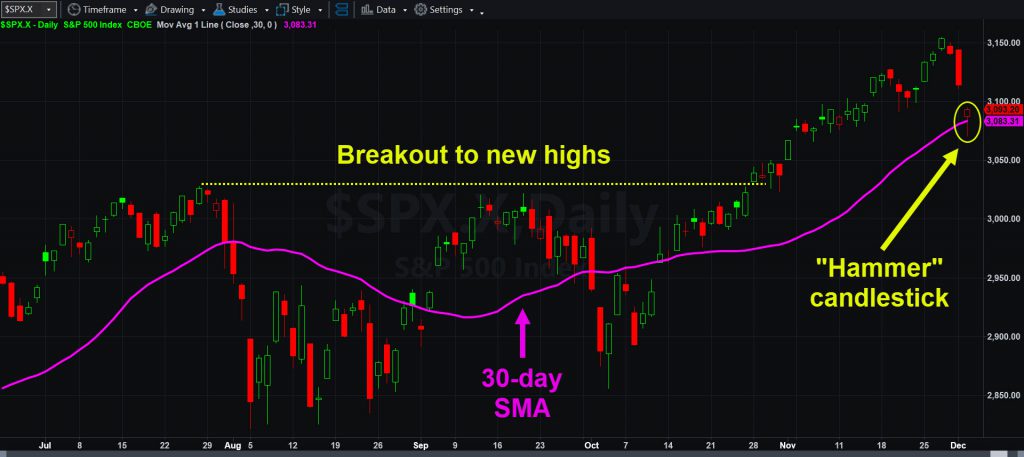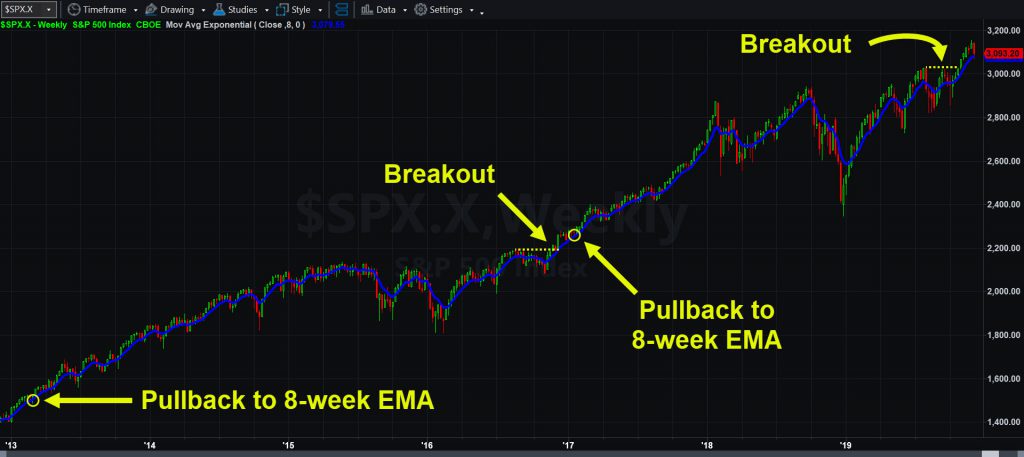Stocks just had their sharpest drop in a couple of months. What should we make of it?
The first thing that jumps out on the chart is that the S&P 500 remained in breakout territory versus its old trading range. The index is still 1 percent above old resistance near 3030. The Nasdaq-100 is in a similar place on its chart, while the Dow Jones Industrial Average pulled back to hold its July peak around 27,400.
Technical analysts generally view that kind of price action as consistent with the earlier bullish move. They’ll now watch for Tuesday to become a higher low, possibly representing the first real pullback following last month’s breakout.
A second thing: It could have been much worse because at one point the S&P 500 was down 1.4 percent. But the index held the lows and clawed back to cut that loss by more than half. That resulted in a so-called “hammer” candlestick, which is often viewed as the sign of bottoming after a drop.

Sellers vs. Buyers
The lack of follow-through to the downside may also indicate that sellers didn’t really control the session. That’s not a surprise when you consider that an unexpected news story caused the drop, President Trump saying there might not be a trade deal with China.
While headlines like this can shock the market, buying and selling is the real reason why stocks go up or down over time. Those flows of money into and out of the market seldom change because of a single news story or a single event. As the old saying goes, the trend is your friend.
Next, the balance of power has shifted toward the bulls recently. The question now is whether uncertainty about foreign trade is a strong enough negative to change investor sentiment — especially with big domestic catalysts coming soon. Those include:
- Friday, December 6: Non-farm payrolls and consumer sentiment
- Wednesday, December 11: A Federal Reserve meeting, with interest rates expected to remain unchanged
- Friday, December 13: Retail sales
- The holiday-shopping season is also underway. Initial sales from Black Friday and Cyber Monday slightly lagging estimates.
On the other hand, trade fears could re-emerge if the White House lets tariffs take effect on December 15. Most investors have assumed Trump will revoke them as part of an agreement with Beijing.

Key Moving Average in Play?
Finally, the S&P 500 just held two important moving averages. Its weekly chart bounced at the eight-week exponential moving average (EMA). And, the daily chart held its 30-day simple moving average (SMA).
Interestingly both of these lines provided support following the index’s last two breakouts. In January 2013, stocks ran to new highs as worries about the “fiscal cliff” faded. A month later, they pulled back and bounced at those same moving averages.
The S&P 500 also broke out to new highs in December 2016 after investors stopped worrying about President Trump’s election. It paused and held support at the eight-week EMA and 30-day SMA about a month later, before proceeding to new record highs.
Fast forward to December 2019 and stocks might be in a similar place, pulling back to the same moving averages about one month after breaking out.
In conclusion, markets never go in straight lines and disciplined investors wait for pullbacks. The coming economic data could disappoint and more tariffs could hit in two weeks. However, the bulls may find other reasons to be optimistic. Hopefully this post helps you see both sides.























